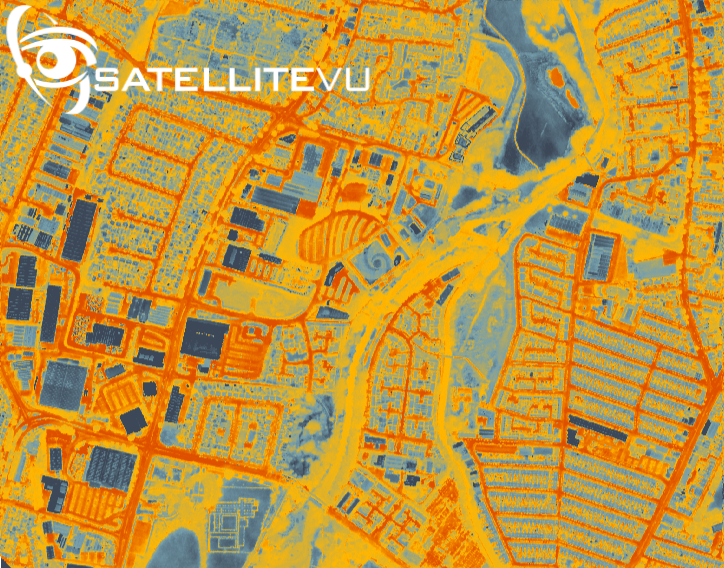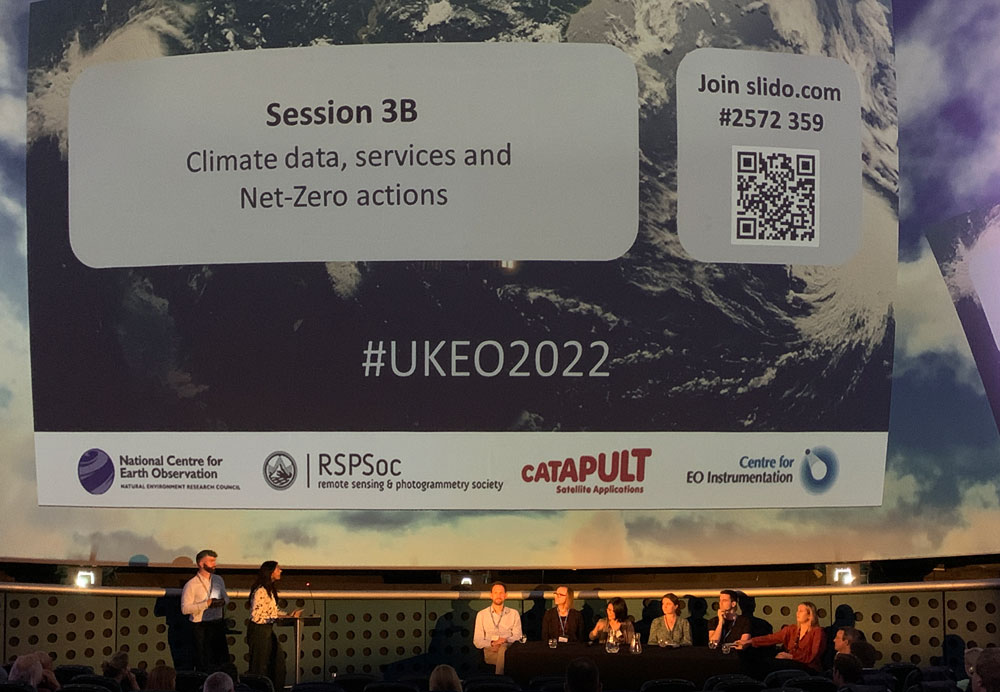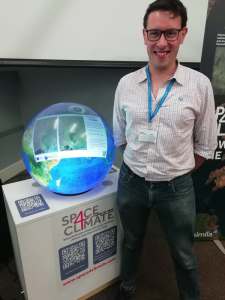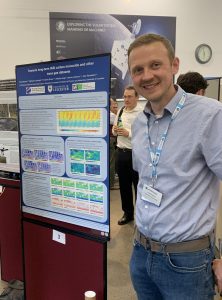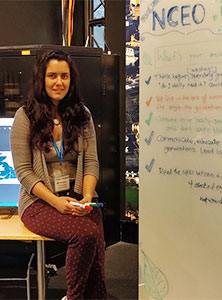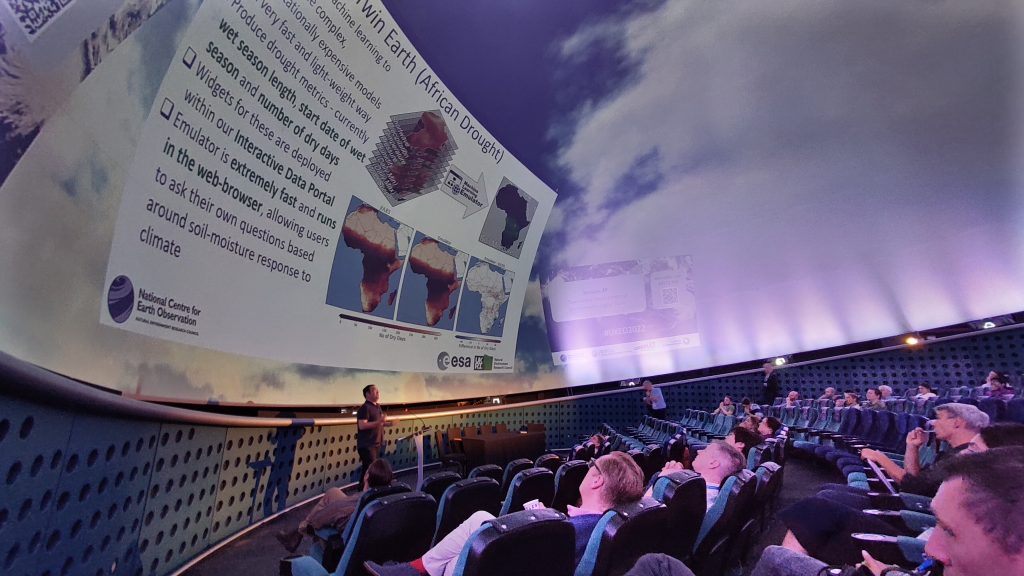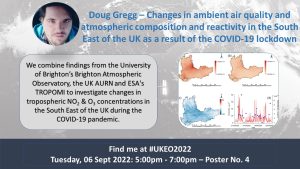The UK National Earth Observation Conference typically happens every three years. It is the largest annual gathering of the Earth observation, remote sensing and photogrammetry communities anywhere in the UK.
Surrounded by satellites and rockets, at the National Space Centre and Space Park Leicester, #UKEO2022 landed in the perfect setting. The conference ran from the 6-8 of September and delivered a packed programme that welcomed over 400 registered delegates from science, industry and government and featured 10 keynotes/plenaries, 66 poster presentations and 167 science presentations.
This is the first in-person UKEO conference since the 2018 Birmingham event and certainly lived up to expectations in providing a lively forum for researchers, industry and government to reconnect and share the latest developments in EO research, satellite missions and space-enabled technologies. Most presentations were recorded and delegates will be able to watch presentation videos that they missed or those that they’d like to review.
We asked some of our staff to write up their reflections of #UKEO2022:
Dr Simon Proud, Senior Remote Sensing Scientist, NCEO and RAL Space, said; ‘The UKEO conference was a great opportunity to hear about the latest developments across the varied UK Earth observation sphere, both in science and industry. I presented my latest research on how we can detect thunderstorms from space and how these storms have changed with our climate over the past 20 years. This showcased how vital satellites now are for monitoring the health of our planet – as well as providing hope for the future: I saw a lot of fascinating presentations about how satellites can track illegal emissions and help to restore our ecosystems.’
Dr David Moore, Senior Remote Sensing Scientist, NCEO, said; ‘The UKEO presented a welcome opportunity to discuss my recent results on global observations of carbon monoxide (CO) levels in the atmosphere using data from the Infrared Atmospheric Sounding Instrument (IASI). Carbon monoxide acts an indirect greenhouse gas in the atmosphere, meaning increasing levels of CO can lead to increases in other greenhouse gases in the atmosphere such as methane (CH4). We are starting to see signs of CO levels increasing significantly in recent years, after a long period of decline. The main sources of CO are wildfires and industrial activity and we are looking to understand what is driving these changes by using satellite data observations in combination with atmospheric models.’
Dr Cristina Ruiz Villena, NCEO Research Associate, said; ‘Our session ‘Python for Earth Observation and Climate Sciences” was the first of its kind and aimed to provide a space for scientists to share and discuss useful Python tools, applications, and best practices. It was a ‘standing-room only’ session that sparked interesting discussions to take this collaboration further, perhaps in the form of an NCEO-wide Python interest group. These sorts of conversations and brainstorming sessions are crucial in our work as researchers, as they allow us to improve our methods and come up with new, exciting ideas. Of particular interest to the wider public and stakeholders were our discussions about how we can use Python tools to democratise access to EO and climate data, for end users and policymakers alike.’
RSPSoc Awards
The Remote Sensing and Photogrammetry Society (RSPSoc), co-organisers of #UKEO2022, presented their annual awards during the conference and also made two special ‘conference awards’ as below.
Poster Paper Prize: Awarded for best poster paper displayed at #UKEO2022, judged by members of the RSPSoc Council. Consisting of an award of £150 and a certificate, and supported by RSPSoc: “Changes in ambient air quality and atmospheric composition and reactivity in the South East of the UK as a result of the COVID-19 lockdown” Gregg, D. J.; Wyche, K. P.; Nichols, M; Parfitt, H.; Beckett, P.; Smallbone, K. L.
Richard Brittan, Alcis Managing Director, said; ‘My talk focused on the many threats for the public sector. There is a long way the UK public sector still has to travel to gain the sorts of benefits and impacts that well-managed EO inputs can and currently bring. More could and should be done to support non-traditional EO users, in particular the general public, to better exploit the benefits of EO data.’
RSPSoc Presidents’ Cup: Awarded for the best oral presentation at the #UKEO2022, as voted by delegates. The Presidents’ Cup winner for 2022: “The Business of EO. Opportunities and threats of the evolving EO market for the public sector,” Richard Brittan.
#UKEO2022 Conference Organisers
